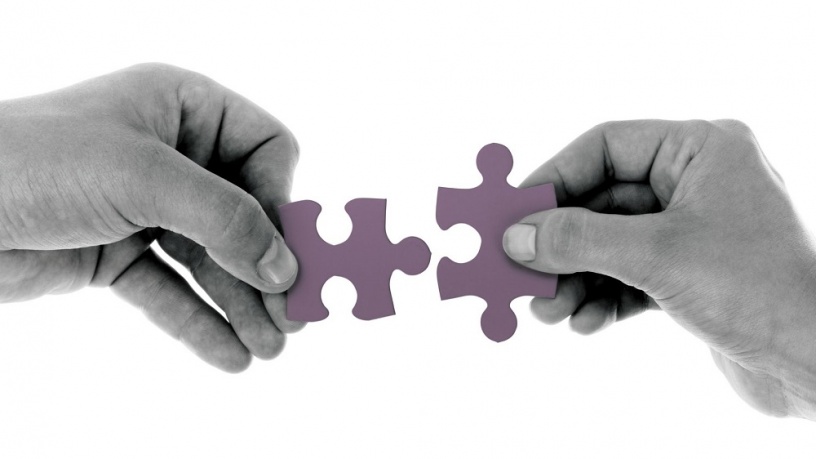Net and Windows
The .NET Framework is an application development platform created by Microsoft for developing software applications on top of the Windows operating system.
It provides a large library of pre-built classes, which developers can use to create their own applications, including web services, desktop apps, mobile apps and more. The .NET Framework also provides tools that allow developers to quickly build secure and reliable applications.
Additionally, it contains built-in security features such as encryption and authentication that help protect code from malicious activity. By leveraging these capabilities in combination with the power of the Windows OS, developers are able to rapidly deliver powerful solutions tailored specifically for their customers’ needs.
The relationship between technology and education is an important one, as advances in technology have had a major impact on the way we learn. Technology has enabled us to access information more quickly than ever before, allowing us to explore new topics with ease. It has also allowed teachers to use innovative teaching methods such as virtual classrooms and interactive learning experiences.
Finally, technology has helped bridge the gap between students from different backgrounds by providing them with access to resources that may otherwise be unavailable or difficult for them to obtain.
What Is the Relationship Between Age and Happiness?
The Relationship between Two Variables is Called
The relationship between two variables is called a correlation. Correlations measure how closely related two variables are and can range from -1 (perfectly inversely related) to +1 (perfectly positively related). It’s important to note that the existence of a correlation doesn’t necessarily indicate causation, but it does suggest there may be an underlying connection worth exploring further.
What is the Relationship between Two Variables
The relationship between two variables is the way in which changes in one variable (the independent variable) affect the other (the dependent variable). When graphed, this relationship is represented by a line and can be used to predict how changes in the independent variable will affect the dependent variable. In some cases, there may be no obvious connection between two variables; however, even when no linear relationship exists, it is still possible for them to influence each other in complex ways.
What is the Relationship between a And B
The relationship between A and B is an important one, as it can determine the success or failure of their respective goals. It is often necessary for both entities to work together in order to achieve their desired outcomes, and this connection must be built on a foundation of mutual respect and understanding. Whether it’s a business partnership or two people forming a personal bond, having strong communication skills and being willing to compromise are essential components of any successful relationship between A and B.
The Relationship between Two Variables in Research
When conducting research, it is important to understand the relationship between two variables. This means determining how one variable influences, or affects, another variable. For example, researchers may investigate how increased levels of physical activity affect weight loss or how lower income affects educational attainment.
By understanding the relationship between two variables in a study, researchers can gain meaningful insight into the topic being studied and draw valid conclusions from their findings.
Relationship between Variables in Research Examples
The relationship between variables in research is a key component to any study. For example, when researching the effects of an experimental drug on a particular illness, researcher must consider the relationship between taking the drug and experiencing relief from symptoms. If there is no correlation between these two factors, then it can be concluded that the drug has no effect on treating the illness.
Additionally, researchers must also look at other possible relationships such as age or gender of participants and how they may impact results. By closely examining all of these interrelated variables, researchers can better understand their data and draw more reliable conclusions about their study’s outcomes.
Relationship between Variables Meaning
The relationship between variables meaning is a very important concept in statistics. It refers to the idea that two or more variables are related, and that changes in one variable can cause corresponding changes in another. For example, if we were studying the effect of temperature on plant growth, then temperature would be considered an independent variable while plant growth would be a dependent variable.
As the temperature changes, it will likely have an impact on how much the plants grow. Understanding these relationships helps us to understand phenomena better and make more informed decisions about our data.
What is the Relationship between Wavelength And Frequency
The relationship between wavelength and frequency is an inverse one, meaning that as one increases the other decreases. The higher the frequency of a wave, the shorter its wavelength will be. Conversely, the lower the frequency of a wave, the longer its wavelength will be.
This mathematical relationship is known as the Wave Equation and can be expressed mathematically as: Wavelength = Speed of Light/Frequency.
Relationship between Variables Examples
When it comes to discussing relationships between variables, an example is a correlation. A correlation is when two variables are found to have some sort of relationship and move together in the same direction. For instance, there may be a positive correlation between the amount of money someone earns and their happiness levels; as one increases, so does the other.
Alternatively, there could also be a negative correlation such as temperature dropping with higher altitude. In this case, when one variable goes up, the other goes down. Understanding these relationships between different variables can help us better understand our world around us.

Credit: www.iedunote.com
What is a Relationship between Two Variables?
A relationship between two variables is a mathematical connection that describes how one variable affects the other. This can be represented by an equation, graph, or chart and can show how changes to one variable affect the other. For example, in a linear regression model the independent variable
(x) is used to explain variation in the dependent variable (y). As x increases, so does y; as x decreases, so does y.
In this case there is a positive correlation between x and y meaning that they are related in some way.
What is a Relation Relationship Between?
A relationship between two entities is an association that exists between them. This could be a causal connection, such as one event causing another; a logical connection, such as two facts being related to each other; or an emotional bond, where the two parties share feelings of trust and affection for one another. Relationships are often complex and may involve multiple layers of connections existing simultaneously between different components or variables.
Understanding these relationships can help us gain insight into how systems work together and make decisions about our interactions with others.
What are Examples of Relationship between Variables?
A relationship between variables is when two or more variables are connected in some way. Examples of relationships between variables include correlation, causation and association. Correlation is a statistical measure that shows the strength of a linear relationship between two or more variables.
Causation occurs when one variable causes changes in another variable; for example, if there is an increase in temperature, this could cause an increase in air pressure. Association occurs when two or more unrelated events occur together; for example, people who eat ice cream may be more likely to go swimming than those who don’t eat ice cream.
How Do I Show the Relationship between Two Variables?
To show the relationship between two variables, you can use visualization tools such as scatter plots or line graphs. Scatter plots are particularly useful for showing the strength of a correlation between two variables by displaying each data point in relation to both axes. This allows you to observe if there is a positive or negative correlation and how strong it is.
Line graphs can also be used to depict relationships between two variables over time, which may reveal trends or patterns that would otherwise go unnoticed when looking at the data points individually. Additionally, correlations can be tested using statistical methods like Pearson’s r coefficient, which measures linear relationships between pairs of variables on a scale from -1 (perfectly negative) to +1 (perfectly positive).
Conclusion
The relationship between exercise and mental health is complex, but increasingly clear. Physical activity can improve mood, reduce anxiety, and increase self-esteem in both adults and children. Exercise also has positive effects on cognitive functioning, including improved concentration and better academic performance in school.
As more research is conducted on the connection between physical activity and mental health, it becomes apparent that this relationship is beneficial for individuals of all ages. The evidence suggests that engaging in regular physical activity can positively impact one’s mental wellbeing throughout life.



